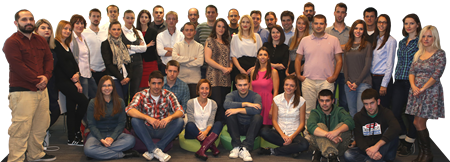A vajdasági római katolikus templomok architektúrája
| Cena: |
| Stanje: | Nekorišćen |
| Garancija: | Ne |
| Isporuka: | CC paket (Pošta) Lično preuzimanje |
| Plaćanje: | Tekući račun (pre slanja) Lično |
| Grad: |
Beograd-Mladenovac, Beograd-Mladenovac |
ISBN: Ostalo
Godina izdanja: 2019
Oblast: Arhitektura
Autor: Domaći
Jezik: Mađarski
Architecture of Roman Catholic churches in Vojvodina : 1699-1939 - Dubravka Đukanović
Pétervárad : Tartományi Műemlékvédelmi Intézet ; Szabadka : Magyar Nemzeti Tanács ; Újvidék : Forum 2019 579 strana : ilustrovano ; jezik mađarski i uporedo engleski
odlična očuvanost
A kivételesen értékes műemlékállományhoz Vajdaság területén a római katolikus egyház 244 fennmaradt szakrális épülete tartozik, túlnyomó részük monumentális épület, amelyek többsége ma is istentiszteleti célokra szolgál, mégis elkerülték azoknak a kutatóknak a figyelmét, akik az utóbbi több mint hetven év folyamán Szerbiában az efféle építészet történetével foglalkoztak. A műemlékvédelmi intézmények kutatócsoportjainak figyelme is csak elvétve fordult e téma felé, általában csak egy-egy konkrét épületet vizsgáltak. A kutatók rendszerint az épületek építésének stílusára összpontosítottak, valamint a bennük őrzött ingó javakra, miközben szinte teljesen felderítetlen maradt az épületek térkoncepciójának, funkciójuk és formájuk viszonyának, az építészeti forma eredetének problematikája, a közép-európai központok hatása és az építészeti formák tipológiája. Ebből logikusan következett annak szükségessége, hogy megvizsgáljuk a Vajdaságban a 18. és a 19. században, valamint a 20. század első évtizedeiben barokk, klasszicista és historizáló stílusban épült római katolikus egyházi épületek architektúrája tér- és formabeli jellegzetességeinek eredetét és fejlődését, s ebben a monográfiában bemutatjuk a kutatás eredményeinek egy részét.
The exceptionally valuable heritage includes 244 surviving sacral buildings of the Roman Catholic Church in the territory of Vojvodina, the vast majority of which are monumental buildings, most of which are still used for religious purposes, yet they have escaped the attention of researchers who have been studying the history of this type of architecture in Serbia for the past seventy years. The attention of research groups from monuments protection institutions has also rarely turned to this topic, usually examining only one specific building. Researchers have usually focused on the style of construction of the buildings and the movable assets preserved in them, while the problems of the spatial concept of the buildings, the relationship between their function and form, the origin of the architectural form, the influence of Central European centers and the typology of architectural forms have remained almost completely unexplored. From this, it logically followed the need to examine the origin and development of the spatial and formal characteristics of the architecture of Roman Catholic church buildings built in the Baroque, Classicist and Historicist styles in Vojvodina in the 18th and 19th centuries, as well as in the first decades of the 20th century, and in this monograph we present some of the results of the research.
Ne šaljem u inostranstvo!
Ne šaljem na Kosovo (tj. Pošta ne prima pošiljke za Kosovo).
Predmet: 81802849







